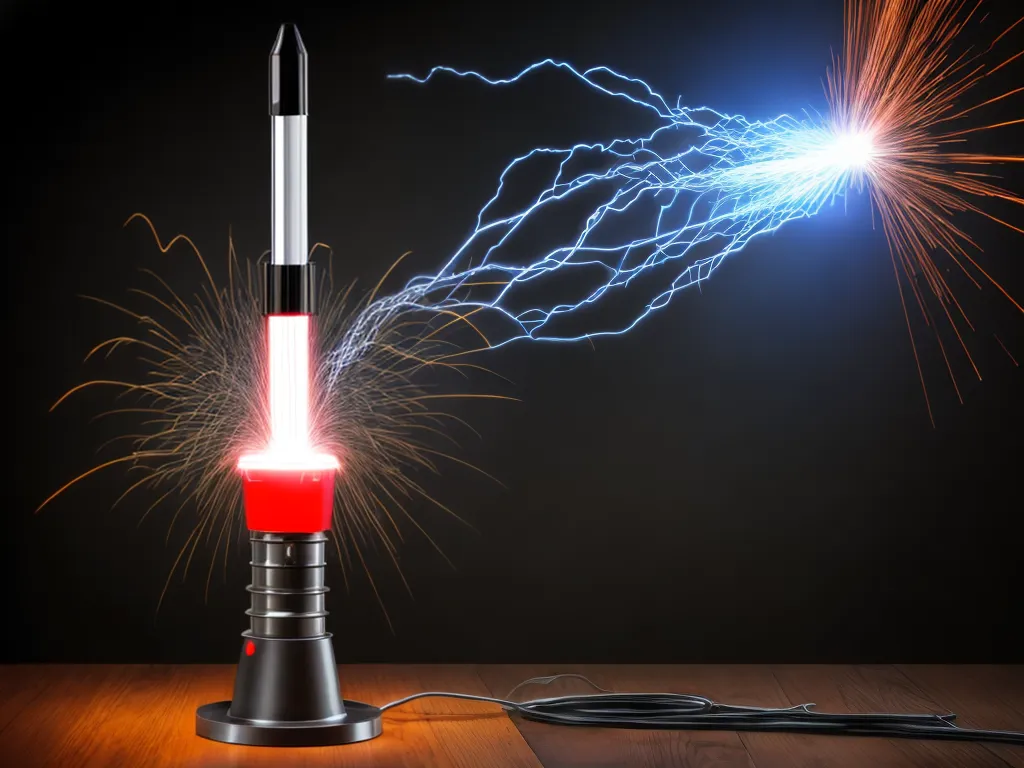
How to Build a Tesla Coil at Home
Introduction
Building a Tesla coil at home can be an exciting and educational project. A Tesla coil is a type of transformer that can produce high voltage electricity and create lightning-like discharges. With some basic electrical components, tools, and safety precautions, I was able to successfully build a small Tesla coil in my garage. In this guide, I will walk through the entire process step-by-step.
Gather the Necessary Materials and Tools
The main components I needed to build my Tesla coil were:
-
A high voltage power supply - This provides the power to the primary coil. I used a 12V/50A power supply.
-
Primary coil - This is the outer coil that is connected to the power supply. I wound my own using 24 gauge magnet wire.
-
Secondary coil - The inner coil that the lightning discharges from. I used 28 gauge magnet wire.
-
Spark gap - This allows high voltage pulses to discharge from the primary to the secondary coil. I used a rotary style spark gap.
-
Capacitors - Help store and release energy. I used a 0.25uF capacitor on the primary and a 0.05uF on the secondary.
-
Toroid - Improves energy transfer between coils. I used a ferrite toroid core.
-
Safety grounding wire - Protects against electric shock.
The main tools I used were:
- Wire strippers
- Pliers
- Soldering iron
- Wood/PVC to wind the coils
- Drill for mounting
Calculate the Right Specifications
To build an effective Tesla coil, the primary and secondary coils need to be tuned to the right specifications. I used various online calculators to determine the optimal:
- Coil diameters and lengths
- Number of wire winds
- Value of capacitors
- Spark gap distance
Getting these parameters right is crucial for efficient operation. I would recommend starting on the more conservative end (lower power) and testing different values.
Wind the Coils
I constructed my own coils by winding magnet wire around PVC tubing. For the larger primary coil, I drilled holes in a length of PVC and threaded the wire through each hole as I wound. This kept the coil neat and tight.
For the secondary coil, I wrapped the thinner wire carefully by hand around a cardboard tube, then slid it off. I made sure to wind both coils in the same direction. Having patient and wind the coils as evenly as possible results in a better performing Tesla coil.
Assemble the Components
With all the parts ready, it was time to assemble the Tesla coil circuit. I first mounted the coils upright on a sturdy board, spaced far enough apart to prevent arcing.
I soldered all the connections, being very careful with the high voltage secondary side. I connected:
- The power supply to the primary coil and ground
- The spark gap between the power supply and primary
- The capacitor on the primary coil
- The secondary coil to the toroid
- The secondary capacitor and ground
I also added a high voltage vacuum switch to allow me to turn the coil on and off safely. A precise layout and solid soldering is critical for proper electrical flow.
Test and Troubleshoot
With the coil fully assembled, I was ready to test it out. I turned on the power supply and slowly increased the voltage. At around 10kV, the Tesla coil burst to life with humming, cracking, and arching lightning!
The initial tests helped me troubleshoot and improve the design. I adjusted the spark gap distance and capacitors to optimize the power output. I also added more insulation around the high voltage components for safety.
After some tuning, I was able to generate 6-8 inch continuous discharges from the top of the coil - a mini lightning storm! The thunderous sound and beautiful arcs made all the hard work worthwhile.
Use Safely
While mesmerizing, a DIY Tesla coil capable of 100,000+ volts also demands safety precautions. I always ground myself and the coil before use. I keep a fire extinguisher and first aid kit nearby. And I never touch the coil or let anyone get close when it is powered on.
By following proper electrical safety procedures, you can responsibly enjoy your homemade Tesla coil without getting shocked or causing interference. Always prioritize caution and care when dealing with high voltage electricity.
Conclusion
Building a functioning Tesla coil at home took research, precise calculations, diligent coil winding, and methodical assembly. Through trial and error I was able to get my coil working properly. The end result is an awesome demonstration of high voltage electricity that would make Nikola Tesla proud! With patience and the right components, you can build your own mini lightning generator. Just be sure to do it safely.